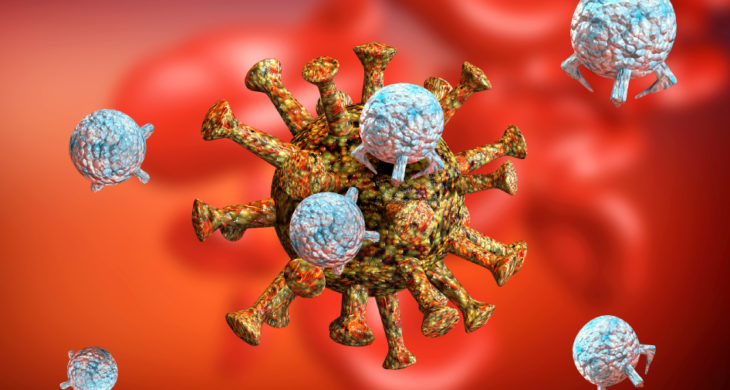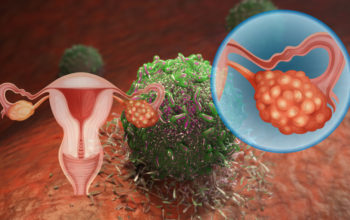
Date: 20th July 2020
Memory T cells induced by previous pathogens can shape the susceptibility and clinical severity of subsequent infections by triggering a faster and stronger immune response. There is currently very little knowledge whether pre-existing memory T cells exist that can potentially recognise SARS-CoV-2. Now scientists demonstrate SARS-CoV-2 specific T cell immunity in cases of COVID-19, and also show SARS-recovered patients that recovered from SARS 17 years previously have persisting T cells that display robust cross-reactivity to SARS-CoV-2.
SARS-CoV-2 belongs to the Coronaviridae family, which consists of 6 other coronaviruses known to infect humans. Four of theses viruses cause the common cold, whilst SARS-CoV-1 was responsible for the 2003 outbreak of SARS (Severe Acute Respiratory Syndrome), and MERS-CoV the Middle East respiratory syndrome which was first reported in 2012. SARS-CoV-1 and SARS-CoV-2 are highly conserved, and sequences of certain structural and non-structural proteins share 99-100% identity. A team of scientists led by Antonio Bertoletti, from Duke-NUS Medical School, Singapore, therefore wanted to investigate the potential T cell response in COVID-19 patients and to determine long-term immune potential of SARS-CoV-1 specific T cells and whether they would infer immunity to SARS-CoV-2.
As a starting point - as little is actually known about SARS-CoV-2 specific T cells - the team first studied the T cell response in patients who had recovered from COVID-19. Blood samples were collected from 36 individuals who had displayed mild to severe COVID-19 symptoms and the T cell responses against 3 viral proteins were examined.
NSP7, NSP13 and nucleocaspid protein-NP were chosen as the proteins due to high homology between the coronaviruses. The team synthesised a series of overlapping peptides which covered the length of each protein and split them into pools of peptides. Peripheral blood mononuclear cells (PBMCs) from the patients were then stimulated with the different peptide pools and analysed for the number of T cells secreting immune-response cytokines after stimulation.
Nearly all PBMCs from COVID-19 convalescents showed a NP-specific response, whilst responses to NSP7 and NSP13 were seen only at low levels (12/36 samples). Further tests revealed that 8/9 patients possessed PBMCs that could recognise multiple regions of the SARS-CoV-2 NP, and in 7 of those patients a single NP peptide could activate the T cells. Interestingly, the team also found that COVID-19 convalescents developed T cells specific to particular regions of NP that had been previously identified as T cells targets during SARS infection. Together this suggested that SARS-CoV-2 specific T cells are present in COVID-19 recovered patients and that these patients could potentially mount a T cell response that may cross-react against SARS-CoV-1 and, of course, vice versa.
One question of great concern for the current pandemic is how long-lasting acquired immunity might be. Whilst, this cannot be determined yet for COVID-19 it can be for SARS. To look at this the team collected PMBCs from patients, 17 years after SARS infection, and then again tested for an immune response. In an encouraging start, an immune response to SARS-CoV-1 peptides was seen, and this was almost exclusively against NP and not NSP7 and NSP13. However, could these T cells also react to to SARS-CoV-2? Remarkably they could, and all PMBCs from the 23 SARS recovered individuals tested reacted to SARS-COV-2 NP peptides. Furthermore, a clear and robust expansion of these NP-reactive cells was observed after an encounter with SARS-Cov-2. The team therefore postulated that long-lasting T cells generated from a coronavirus infection may be able to protect against, or modify the pathology of COVID-19.
To test whether this was the case, and explore the possibility that even the coronaviruses causing the common cold could produce SARS-CoV-2 reactive T cells, samples from 37 SARS(-1 or -2) unexposed donors were tested. In 19 out of 37 individuals, the team detected a SARS-CoV-2 response, and interestingly whilst the previous experiments had shown COVID-19 and SARS convalescents had reacted preferentially to the NP peptides, unexposed donors actually demonstrated reactions to all NP, NSP7 and NSP13.
Conclusions and future applications:
The team have shown here that infection with SARS-CoV-2 can produce virus-specific T cells that could recognise several regions of the structural nucleocaspid protein. Patients that have been exposed to SARS-CoV-1 have long-lasting memory T cells (17 years) which displayed cross-reactivity to SARS-CoV-2. Over 50% of unexposed donors habour expandable T cells that can cross-react with SARS-CoV-2 suggesting that contact or infection from other coronviruses that are associated with the common cold may possibly infer some immunity.
This publication is one of the first to closely map the parts of the virus targeted by T cells. Interestingly, whilst most COVID-19 treatments and vaccines are being developed around the spike protein the results here might suggest that the other targets such as the nucleocaspid protein may be worth investigating.
The longevity of the specific T cells shown here is certainly encouraging and whilst we are still unclear of the dynamics of antibody levels in COVID-19 recovered patients over time, the fact that reactive T cells remain in patients 17 years after infection of SARS, that also cross-react with SARS-CoV-2 is cause for hope.
However, whilst understanding the distribution and frequency of these cross-reactive T cells in the population may give use crucial insights into the different infection rates or pathology of COVID-19, the real question yet to be answered is do they show a protective capacity and this will be the next question high on the agenda!
Le Bert, N., A. T. Tan, K. Kunasegaran, C. Y. L. Tham, M. Hafezi, A. Chia, M. H. Y. Chng, M. Lin, N. Tan, M. Linster, W. N. Chia, M. I. C. Chen, L.-F. Wang, E. E. Ooi, S. Kalimuddin, P. A. Tambyah, J. G.-H. Low, Y.-J. Tan and A. Bertoletti (2020). “SARS-CoV-2-specific T cell immunity in cases of COVID-19 and SARS, and uninfected controls.” Nature.
https://doi.org/10.1038/s41586-020-2550-z

